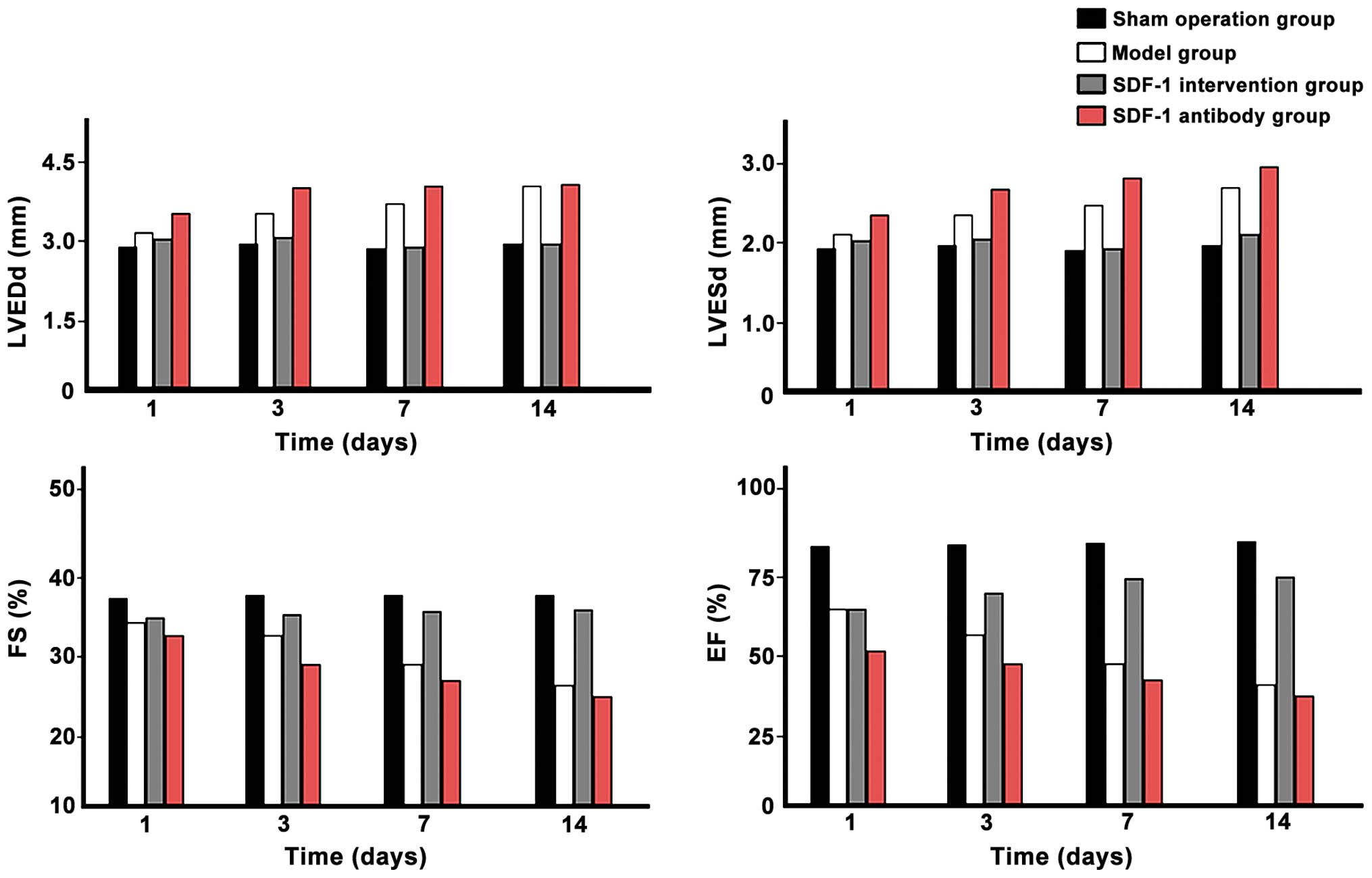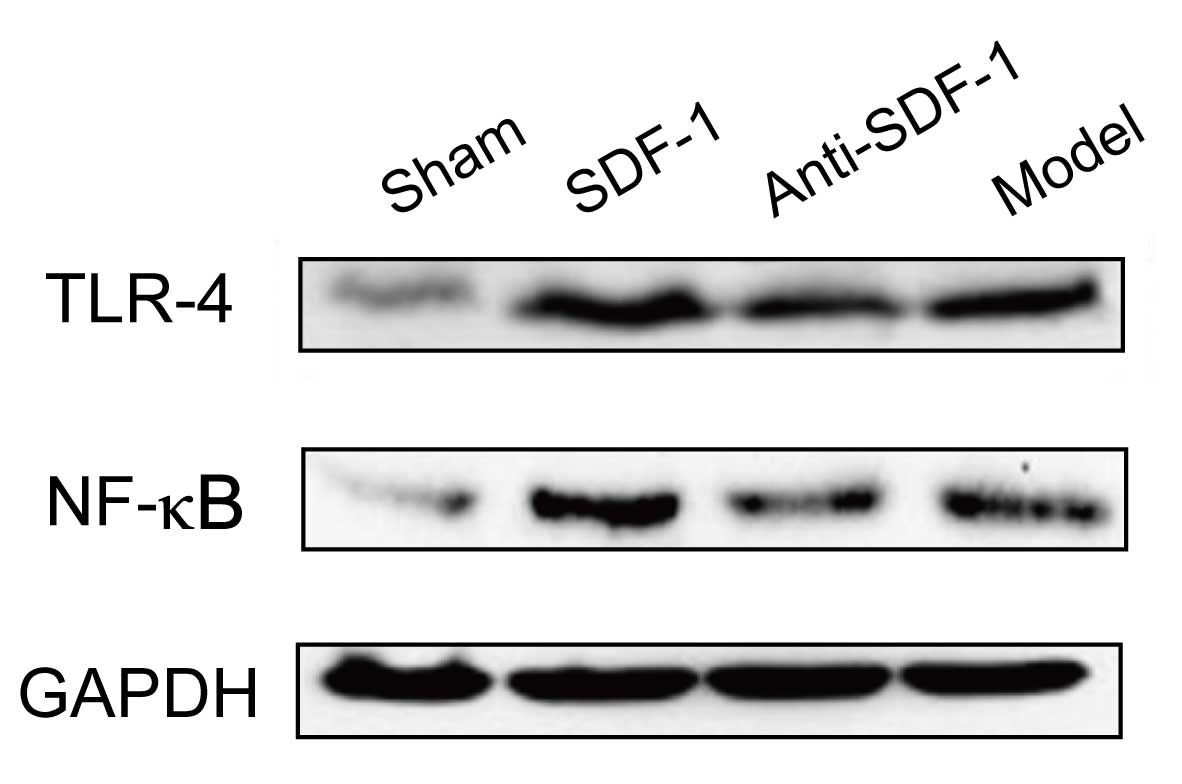|
1
|
Assmus B, Leistner DM, Schächinger V, Erbs
S, Elsässer A, Haberbosch W, Hambrecht R, Sedding D, Yu J, Corti R,
et al: REPAIR-AMI Study Group: Long-term clinical outcome after
intracoronary application of bone marrow-derived mononuclear cells
for acute myocardial infarction: migratory capacity of administered
cells determines event-free survival. Eur Heart J. 35:1275–1283.
2014. View Article : Google Scholar : PubMed/NCBI
|
|
2
|
Ripa RS and Kastrup J: Stem cells: REGENT
trial-the end of cell therapy for MI? Nat Rev Cardiol. 6:567–568.
2009. View Article : Google Scholar : PubMed/NCBI
|
|
3
|
Meyer GP, Wollert KC, Lotz J, Pirr J,
Rager U, Lippolt P, Hahn A, Fichtner S, Schaefer A, Arseniev L,
Ganser A and Drexler H: Intracoronary bone marrow cell transfer
after myocardial infarction: 5-Year follow-up from the
randomized-controlled BOOST trial. Eur Heart J. 30:2978–2984. 2009.
View Article : Google Scholar : PubMed/NCBI
|
|
4
|
Zgraggen S, Huggenberger R, Kerl K and
Detmar M: An important role of the SDF-1/CXCR4 axis in chronic skin
inflammation. PLoS One. 9:e936652014. View Article : Google Scholar : PubMed/NCBI
|
|
5
|
Youssef A and Han VK: Low oxygen tension
modulates the insulin-like growth factor-1 or −2 signaling via both
insulin-like growth factor-1 receptor and insulin receptor to
maintain stem cell identity in placental mesenchymal stem cells.
Endocrinology. 157:1163–1174. 2016. View Article : Google Scholar : PubMed/NCBI
|
|
6
|
Dalonneau F, Liu XQ, Sadir R, Almodovar J,
Mertani HC, Bruckert F, Albiges-Rizo C, Weidenhaupt M, Lortat-Jacob
H and Picart C: The effect of delivering the chemokine SDF-1α in a
matrix-bound manner on myogenesis. Biomaterials. 35:4525–4535.
2014. View Article : Google Scholar : PubMed/NCBI
|
|
7
|
Mierzejewska K, Klyachkin YM, Ratajczak J,
Abdel-Latif A, Kucia M and Ratajczak MZ:
Sphingosine-1-phosphate-mediated mobilization of hematopoietic
stem/progenitor cells during intravascular hemolysis requires
attenuation of SDF-1-CXCR4 retention signaling in bone marrow.
BioMed Res Int. 2013:8145492013. View Article : Google Scholar : PubMed/NCBI
|
|
8
|
Weidner N: Intratumor microvessel density
as a prognostic factor in cancer. Am J Pathol. 147:9–19.
1995.PubMed/NCBI
|
|
9
|
Rudski LG, Lai WW, Afilalo J, Hua L,
Handschumacher MD, Chandrasekaran K, Solomon SD, Louie EK and
Schiller NB: Guidelines for the echocardiographic assessment of the
right heart in adults: A report from the American Society of
Echocardiography endorsed by the European Association of
Echocardiography, a registered branch of the European Society of
Cardiology, and the Canadian Society of Echocardiography. J Am Soc
Echocardiogr. 23:685–713, 786–788. 2010. View Article : Google Scholar : PubMed/NCBI
|
|
10
|
Gong J, Meng HB, Hua J, Song ZS, He ZG,
Zhou B and Qian MP: The SDF-1/CXCR4 axis regulates migration of
transplanted bone marrow mesenchymal stem cells towards the
pancreas in rats with acute pancreatitis. Mol Med Rep. 9:1575–1582.
2014.PubMed/NCBI
|
|
11
|
Roy LD, Sahraei M, Schettini JL, Gruber
HE, Besmer DM and Mukherjee P: Systemic neutralization of IL-17A
significantly reduces breast cancer associated metastasis in
arthritic mice by reducing CXCL12/SDF-1 expression in the
metastatic niches. BMC Cancer. 14:225–227. 2014. View Article : Google Scholar : PubMed/NCBI
|
|
12
|
Belle JI, Petrov JC, Langlais D, Robert F,
Cencic R, Shen S, Pelletier J, Gros P and Nijnik A: Repression of
p53-target gene Bbc3/PUMA by MYSM1 is essential for the survival of
hematopoietic multipotent progenitors and contributes to stem cell
maintenance. Cell Death Differ. 23:759–775. 2016. View Article : Google Scholar : PubMed/NCBI
|
|
13
|
Chang J, Zhang G and Zhang L, Hou YP, Liu
XL and Zhang L: High admission glucose levels increase Fas
apoptosis and mortality in patients with acute ST-elevation
myocardial infarction: a prospective cohort study. Cardiovasc
Diabetol. 12:1712013. View Article : Google Scholar : PubMed/NCBI
|
|
14
|
Fan Y, Yang F, Cao X, Chen C, Zhang X,
Zhang X, Lin W, Wang X and Liang C: Gab1 regulates SDF-1-induced
progression via inhibition of apoptosis pathway induced by
PI3K/AKT/Bcl-2/BAX pathway in human chondrosarcoma. Tumour Biol.
16:12–14. 2015.
|
|
15
|
Moore MA, Hattori K, Heissig B, Shieh JH,
Dias S, Crystal RG and Rafii S: Mobilization of endothelial and
hematopoietic stem and progenitor cells by adenovector-mediated
elevation of serum levels of SDF-1, VEGF, and angiopoietin-1. Ann N
Y Acad Sci. 938:36–45; discussion 45–47. 2001. View Article : Google Scholar : PubMed/NCBI
|
|
16
|
Urbich C and Dimmeler S: Endothelial
progenitor cells: characterization and role in vascular biology.
Circ Res. 95:343–353. 2004. View Article : Google Scholar : PubMed/NCBI
|
|
17
|
Ratajczak MZ, Majka M, Kucia M, Drukala J,
Pietrzkowski Z, Peiper S and Janowska-Wieczorek A: Expression of
functional CXCR4 by muscle satellite cells and secretion of SDF-1
by muscle-derived fibroblasts is associated with the presence of
both muscle progenitors in bone marrow and hematopoietic
stem/progenitor cells in muscles. Stem Cells. 21:363–371. 2003.
View Article : Google Scholar : PubMed/NCBI
|
|
18
|
Gao C and Li Y: GaoC and Li Y: SDF-1 plays
a key role in the repairing and remodeling process on rat
allo-orthotopic abdominal aorta grafts. Transplant Proc.
39:268–272. 2007. View Article : Google Scholar : PubMed/NCBI
|
|
19
|
Xing Q, de Vos P, Faas MM, Ye Q and Ren Y:
LPS promotes pre-osteoclast activity by up-regulating CXCR4 via
TLR-4. J Dent Res. 90:157–162. 2011. View Article : Google Scholar : PubMed/NCBI
|
|
20
|
Džumhur A, Zibar L, Wagner J, Simundić T,
Dembić Z and Barbić J: Association studies of gene polymorphisms in
toll-like receptors 2 and 4 in Croatian patients with acute
myocardial infarction. Scand J Immunol. 75:517–523. 2012.
View Article : Google Scholar : PubMed/NCBI
|
|
21
|
Roland J, Murphy BJ, Ahr B, Robert-Hebmann
V, Delauzun V, Nye KE, Devaux C and Biard-Piechaczyk M: Role of the
intracellular domains of CXCR4 in SDF-1-mediated signaling. Blood.
101:399–406. 2003. View Article : Google Scholar : PubMed/NCBI
|

















